How to choose a skateboard for children from 5 years old?

A skateboard is an excellent sports equipment for adults, teenagers and children from 4-5 years old. Learning to ride it is better from childhood. This article is devoted to how to choose a children's skate for a beginner girl or boy of 6 and 7 years old.
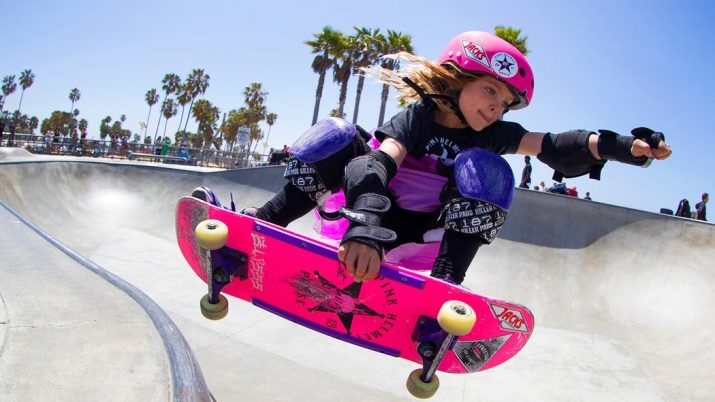
Advantages and disadvantages
Skating is a sport. Like any discipline, it has undeniable advantages:
- training the muscles of the legs and back;
- development of coordination and organ of balance;
- dimensionlessness of the board - it does not have to be changed every year;
- lack of means of fixing the legs - you can quickly jump off, if that;
- availability and a wide range of models.
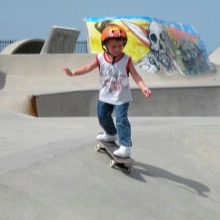
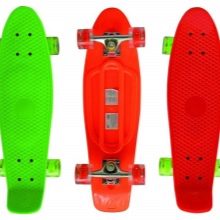
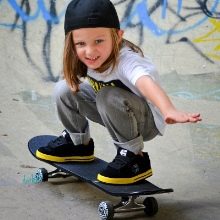
But at the same time, the skateboard also has disadvantages:
- high injury risk - falls are not uncommon even for experienced athletes;
- difficulty of learning - it is advisable to use the services of a trainer, especially for children;
- infrastructure - it is desirable to have special ramps and tracks;
- the danger of buying a substandard product.
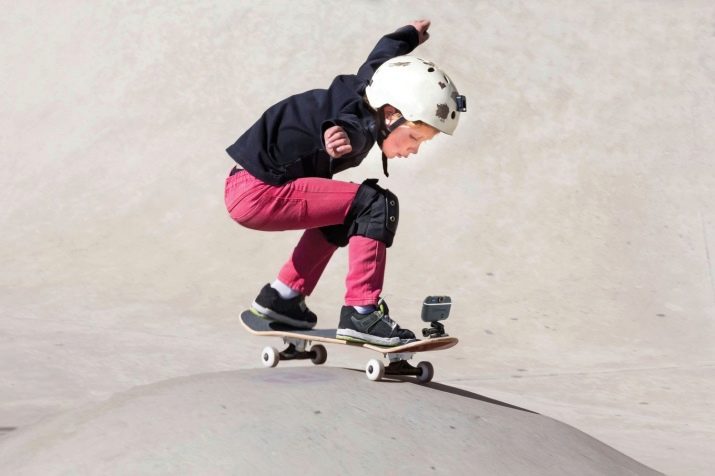
It is worth highlighting the abundance of skate designs. On the one hand, this is good, as different riding styles require different boards. On the other hand, you need to immediately determine the operating conditions so as not to use the skate for other purposes. It is better for beginners to buy the usual classic version, and after mastering it, experiment with riding styles.
Let's talk about injury risk. For this reason, some doctors do not recommend mastering skate for children under 7-8 years old. This is due to the fact that the sense of balance is not yet developed, and the strength of the bones is low. They are partly right, it all depends on the child himself. If the kid is active and will study under the supervision of adults, then you can start from 4 years old.
It is better to study correctly for a five-year-old skater with a coach.It is advisable to master skate on your own in adolescence.

Board options
The construction of adult and kids skateboards is exactly the same. The difference lies only in the size and sometimes in the materials of manufacture. If the sizes of adult skates are standard, then for children you need to choose them according to the size of the foot or age.
Length
The easiest indicator to choose, which has almost no effect on driving performance. Just don’t take too short or too long.
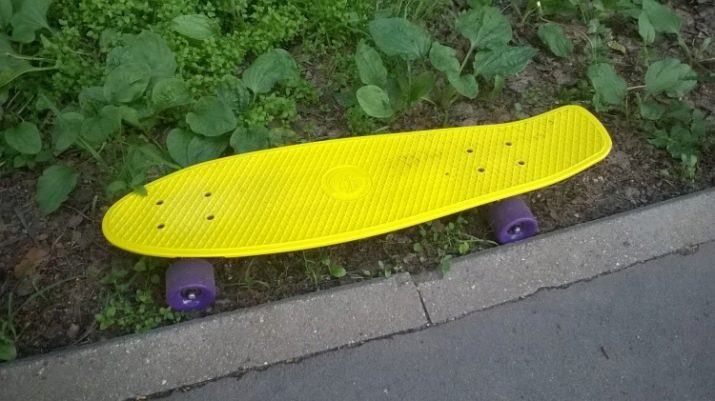
Width
There are already differences here.
- From 6 inches (15.2 cm) - microdeck. Suitable for children under 5 years old.
- From 7 inches (17.8 cm) - mini deck. For children aged 6-8 years.
- 7.125 (17.8 cm) to 7.3 (18.5 cm) inches - middle deck. The child's age is 9-19 years.
- From 7.5 inches (19 cm) - full-size deck. For riders over 13 years old.
It is allowed that the length of the child's foot slightly exceeds the width of the board. But if the wheels protrude beyond the width of the deck, then this is not very good.
If the store does not have a board of the required size, then you can take a wider one.
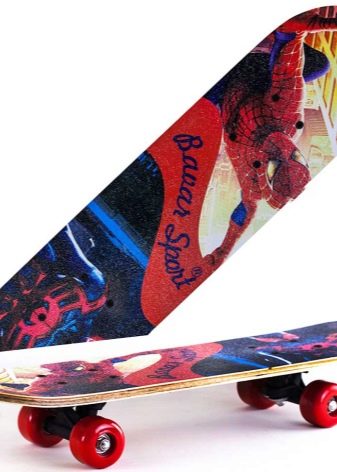

Material
They are plastic and wooden.
- Plastic - for very young children, as it is more beautiful and cheaper, but less durable and durable. It is perfect for checking if a skate is needed at all. In addition, a bright and colorful board will attract the attention of a little athlete and inspire him to further sporting feats.
- Wooden or glued from several layers of maple veneer (these are thin sheets of wood in the manner of plywood), the deck turns out to be strong and durable, all adult models are just like that. For children, 6-7 layers are enough, for adults you need 7-9. If you need to save weight, a lightweight version of 5 layers will do.
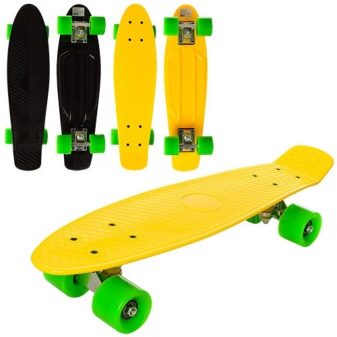

Wheels and suspension
Experienced drivers say tires are half a car. For skaters, this statement is also relevant, because this is also a vehicle. But there are fewer criteria for selection.
The main thing is to take into account the diameter when choosing wheels. It is standard here - the smaller it is, the better the maneuverability and the lower the speed. It is better to choose the diameter of the wheels according to the operating conditions.
- 54-56 mm... Suitable for uneven surfaces, asphalt and special ramps.
- 51-53 mm... Scope of application - asphalt.
- 45-50 mm... The area of use is absolutely flat surfaces.
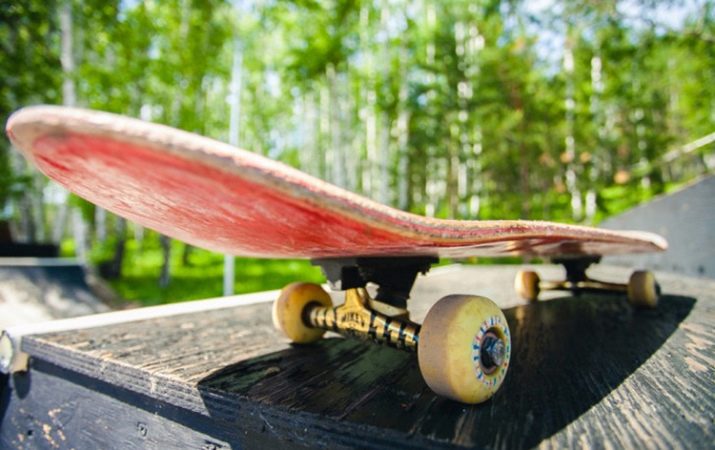
The width of the wheels is in the range of 30-42 mm. Wide wheels should be chosen for asphalt, narrow - for tracks and special surfaces. Wheel rigidity is equally important. It is in the range 78-102A. For tracks, the wheels need soft, for the street - hard (the larger the number in front of A, the harder the wheel).
Noteworthy are the glowing wheels. They inspire the young athlete to set new Olympic records. But among them there is a high percentage of defects.
The suspension is the element that connects the wheels and the deck. It is made from steel or aluminum. Steel is stronger, aluminum is lighter. Sometimes shock absorbers are built into the suspension.
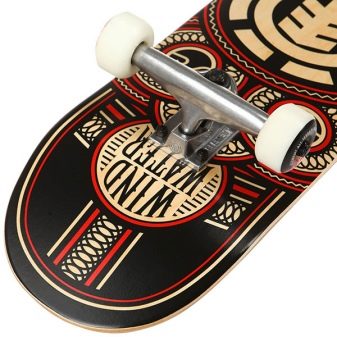

And a few more tips.
- When choosing a wooden deck, pay attention to the date of manufacture. If a tree is stored for a long time, it will deform.
- Pay attention to the curvature of the board - concave. It makes it easier to control the skate, but it requires certain skills. For beginners, it is better to take a flat board or with the smallest bend.
- The deck must have a special coating - griptape. It keeps your feet from slipping and looks like sandpaper.
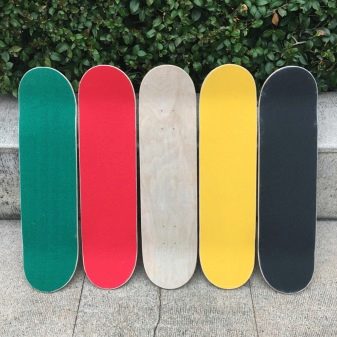
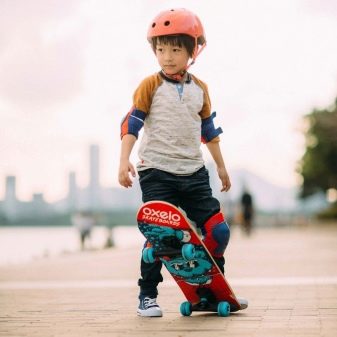
Views
The classic version of the skateboard appeared in the distant 1950s in California. Since then, the industry has made great strides - today several types of this sports equipment are available.
- Cruiser. Designed for urban conditions and smooth roads. The back is slightly raised. Great as the first skateboard for children over 5 years old.
- Stowboard. Instead of a classic deck, it is equipped with a metal foot basket. Well suited for girls as a daily transport. Performing tricks on it is problematic.
- Freeboard. It has not 4, but 6 wheels, while the inner ones can rotate 360 degrees.Thanks to the leg bindings, it is suitable for acrobatic stunts and freestyle. Mounts, by the way, do not interfere with jumping off the skate at any time. It is bought for children and adolescents who already know how to skate well.
- Longboard... The name speaks for itself. Designed for high speed driving, usually downhill gradients. Distinctive features are a pointed nose, a raised tail and large soft wheels. Not used for performing tricks.
- Mountainboard... It is designed for off-road driving. Equipped with large 20cm wheels. Suitable for children over 12 years old.
- Flowboard... It has 14 wheels that greatly increase maneuverability. Great for performing stunts.
- Streetboard, snakeboard or rollersurf. Despite the abundance of names, it has only 2 wheels on turntables. You can ride it without kicking off the ground. Designed to perform professional acrobatic stunts. Such a skate does not exist for children.
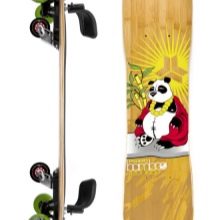
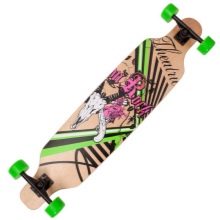
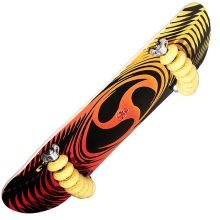
The difference between the models for boys and girls is only in color. It is advisable that the child himself chose him.
Popular models
For ease of choosing a skate, let's present a small rating.
- MaxCity MC-PB23 (RF). This is a longboard made of plastic. Equipped with soft wheels. The disadvantage is the large mass, which is 2.5 kg.
- Jd Bug RT 03 (RF - PRC). It is made of veneer and has a mass of 2 kg. Close to adult models.

These are solid models that will perfectly suit your child. But this does not mean that other firms produce defects. Everyone strives to gain a foothold in the market, which means that it is simply unprofitable to produce low-quality goods.
Skating equipment
After choosing a skate, picking up ammunition is no longer difficult.
- Clothes should be comfortable... It is desirable from natural materials.
- Shoes should be athletic and fit snugly on the leg.
- Mandatory knee pads and elbow pads... Gloves will not be superfluous either.
- The main element of protection is the helmet. Its use is mandatory.

A few words about training
Learning to skate is not a quick process. Patience is important here.
Before training, a beginner should simply stand on the board without moving. This is to train your sense of balance. It is desirable to stand on the grass or a sports mat - this will make the fall softer.
The learner usually falls forward. The instructor should be in front of the skateboard or hold the trainee's hand.
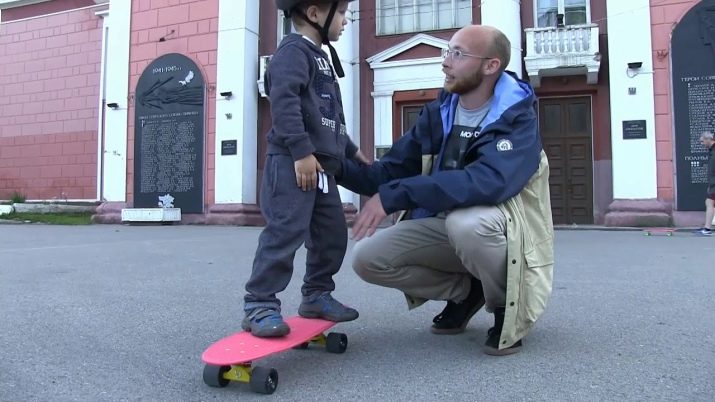
Despite the dangers, skating is a great sport. It can easily become an owner's pride or a lifelong hobby. And learning to ride it is better under the supervision of adults than in the yard with friends.
For information on how to choose a skateboard for your child, see the next video.








